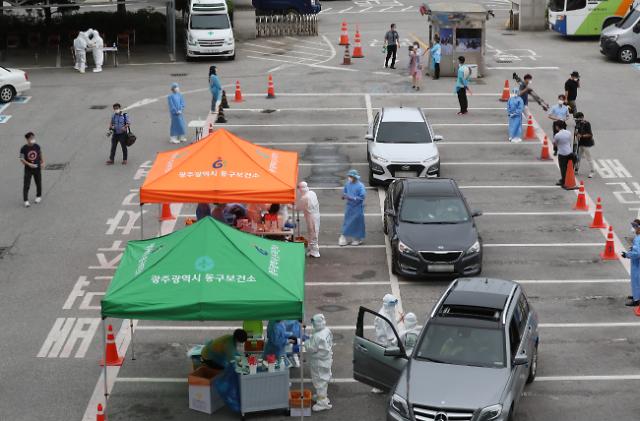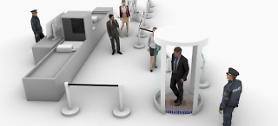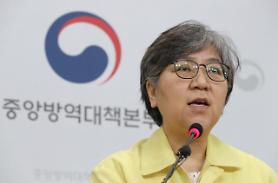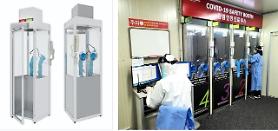
A temporary drive-thru screening center is in operation in the southern city of Gwangju. [Yonhap News Photo]
SEOUL -- A drive-thru system introduced by South Korea for the quick and safe screening of patients infected with a novel coronavirus went beyond the primary gateway to become an international standard at an international body that promotes worldwide proprietary, industrial, and commercial standards. The method has been benchmarked widely by other countries.
The drive-thru screening method proposed by South Korea in April to a technical committee of the Geneva-based International Organization for Standardization (ISO) has been approved as New Proposal, according to the Ministry of Trade, Industry and Energy.
International Standards are developed by ISO technical committees and subcommittees by a process with six steps that will take several years. The first step is a proposal of work (New Proposal). Use of the ISO standards aids in the creation of products and services that are safe, reliable, and of good quality.
The ministry said that South Korea would also seek international standards for other methods used by health officials to stem the spread of COVID-19.
A walk-thru system reduces the time taken for the screening of patients. Usually, it takes about 30 minutes to screen one person because of meticulous disinfection. With a walk-thru system, it takes six or seven minutes. When a visitor enters a diagnostic booth, medical personnel take samples from outside to reduce the risk of direct contact. While the booth is being disinfected, another booth will take samples.
A medical center operated by Seoul National University Hospital has adopted a "glove-wall" system that allows doctors to examine people from the other side of a protective wall. The glove wall system consists of a box-shaped room with a clear acrylic wall with a pair of hand holes which have oversleeves extended outwards so that medical staff can take samples.
South Korea has developed a dedicated app to monitor those in obligatory self-quarantine for two weeks. The app utilizes a GPS function to make the alarm sound if users violate guidelines. The app has been upgraded to include a self-diagnosis function to check for symptoms such as coughing, sore throat and fever.
A smartphone app has been developed to provide verified information to medical personnel who have been deluged with lots of unfiltered or misguided data every day at the front line. Medical staff can receive up-to-date information about COVID-19 as well as the latest medical journals and educational data.
A biometric signal monitoring system is ready for commercial use. Because medical staff can measure biological signals in real time without facing patients, the system can reduce the possibility of secondary infections and efficiently operate medical personnel. South Korean health officials regard the system as a solution for COVID-19 patients to be housed at temporary healthcare centers.
To prevent a queue in patients waiting for beds at isolation wards, patients have been divided into two groups. Critical patients were treated at negative pressure wards and those showing light symptoms or asymptomatic patients were sent to "living and treatment support centers." Government and private buildings equipped with lodging and dining facilities in remote areas have been used as temporary hospitals.
Copyright ⓒ Aju Press All rights reserved.



